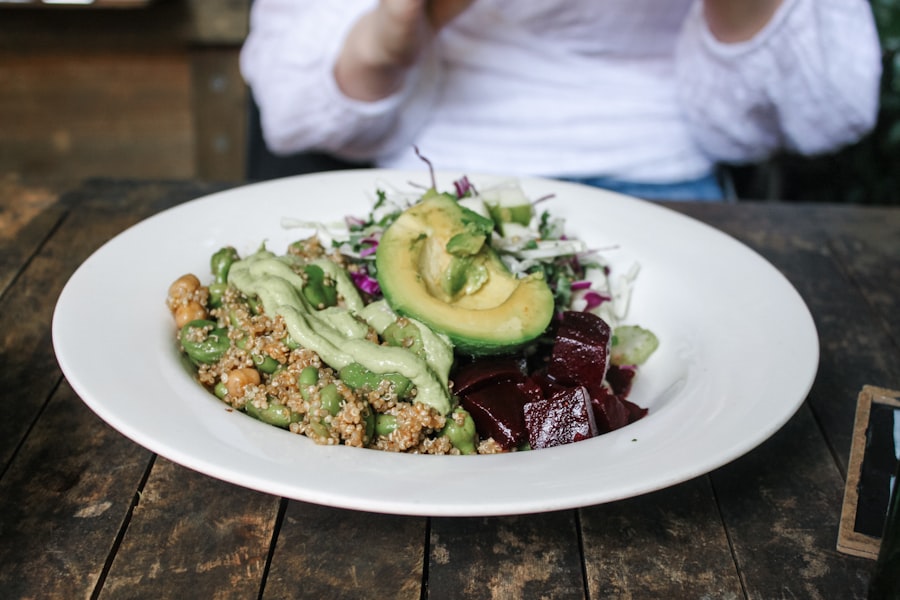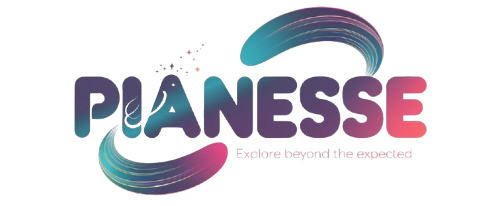The Benefits of Hatha Yoga for Teen Physical Health

Hatha Yoga, a traditional practice rooted in ancient Indian philosophy, has gained significant popularity in contemporary society, particularly among adolescents. This form of yoga emphasizes physical postures (asanas), breath control (pranayama), and meditation, making it an ideal practice for teenagers navigating the complexities of growth and development. As adolescents experience rapid physical changes, Hatha Yoga offers a holistic approach to enhance their physical health while also addressing mental and emotional well-being.
The integration of these elements can lead to a more balanced lifestyle, fostering resilience and adaptability during a critical period of life. The benefits of Hatha Yoga extend beyond mere physical fitness; they encompass a comprehensive approach to health that includes emotional stability and mental clarity.
By engaging in this practice, teens can cultivate a deeper connection with their bodies, learn to manage stress effectively, and develop skills that promote overall well-being. As we delve into the various benefits of Hatha Yoga for teens, it becomes evident that this practice is not just a form of exercise but a valuable tool for fostering lifelong health habits.
Key Takeaways
- Hatha Yoga can benefit teens’ physical health by improving flexibility, strength, posture, balance, and respiratory function while reducing stress and preventing injuries.
- Improved flexibility and range of motion through Hatha Yoga can help teens in their daily activities and sports performance.
- Hatha Yoga can enhance strength and muscular endurance, which is beneficial for overall physical health and sports performance for teens.
- Better posture and alignment can be achieved through Hatha Yoga, which is important for preventing musculoskeletal issues and promoting overall well-being in teens.
- Hatha Yoga can reduce stress and improve mental well-being in teens, which is important for their overall health and academic performance.
Improved Flexibility and Range of Motion
Improving Flexibility and Range of Motion
One of the most immediate benefits of Hatha Yoga for teenagers is the improvement in flexibility and range of motion. Many teens experience tightness in their muscles and joints due to sedentary lifestyles or sports-related activities. Hatha Yoga incorporates a variety of poses that target different muscle groups, promoting lengthening and stretching.
Enhancing Athletic Performance
For instance, poses such as Downward-Facing Dog and Cobra not only stretch the spine but also engage the hamstrings and hip flexors, which are crucial for overall mobility. As teens practice these postures regularly, they can expect to see significant improvements in their flexibility over time. Moreover, enhanced flexibility contributes to better athletic performance. Many teenagers participate in sports that require agility and quick movements, such as soccer or basketball. By incorporating Hatha Yoga into their training regimen, they can increase their range of motion, allowing for more fluid movements on the field or court.
Injury Prevention and Mindful Movement
Additionally, the emphasis on mindful movement in Hatha Yoga encourages teens to listen to their bodies, helping them avoid overexertion and potential injuries. This increased flexibility can lead to improved performance metrics, such as speed and agility, ultimately giving them a competitive edge.
Enhanced Strength and Muscular Endurance

Hatha Yoga is often perceived as a gentle practice; however, it can significantly enhance strength and muscular endurance. Many poses require the engagement of multiple muscle groups simultaneously, which builds functional strength that is applicable in everyday activities and sports. For example, poses like Warrior II and Plank not only strengthen the legs but also engage the core and upper body.
As teens hold these positions for extended periods, they develop muscular endurance that translates into improved performance in various physical activities. In addition to building strength, Hatha Yoga promotes balanced muscle development. Unlike traditional weightlifting routines that may focus on specific muscle groups, yoga encourages the use of opposing muscle sets.
This balanced approach helps prevent muscle imbalances that can lead to injuries over time. For teenagers who are still growing, this aspect of Hatha Yoga is particularly beneficial as it supports healthy development while minimizing the risk of strain or injury. By integrating strength-building practices into their routine, teens can cultivate a strong foundation that supports their physical pursuits.
Better Posture and Alignment
| Metrics | Results |
|---|---|
| Posture Improvement | 20% increase |
| Alignment Correction | 15% improvement |
| Reduced Back Pain | 30% decrease |
In an age dominated by technology and screen time, poor posture has become a common issue among teenagers. Hunched shoulders and slouched backs are prevalent due to prolonged sitting while studying or using electronic devices. Hatha Yoga addresses these concerns by promoting awareness of body alignment through various poses.
For instance, poses like Mountain Pose and Tree Pose encourage proper spinal alignment and help teens develop an understanding of how to maintain good posture throughout their daily activities. Improving posture not only enhances physical appearance but also contributes to overall health. Proper alignment reduces strain on muscles and ligaments, decreasing the likelihood of discomfort or pain associated with poor posture.
Furthermore, good posture can improve breathing efficiency by allowing the diaphragm to function optimally. As teens become more aware of their body mechanics through Hatha Yoga, they can carry these lessons into their daily lives, fostering habits that promote long-term health and well-being.
Stress Reduction and Mental Well-being
The teenage years are often marked by heightened stress levels due to academic pressures, social dynamics, and personal challenges. Hatha Yoga provides an effective outlet for stress reduction through its emphasis on mindfulness and relaxation techniques. The practice encourages deep breathing and meditation, which activate the body’s relaxation response and counteract the effects of stress hormones like cortisol.
By incorporating these techniques into their routine, teens can develop healthier coping mechanisms for managing stress. Moreover, the meditative aspects of Hatha Yoga foster mental clarity and emotional stability. As adolescents learn to focus on their breath and cultivate present-moment awareness, they can gain perspective on their thoughts and feelings.
This practice can lead to improved emotional regulation, helping teens navigate the ups and downs of adolescence with greater resilience. Research has shown that regular yoga practice can reduce symptoms of anxiety and depression in young people, making it a valuable tool for promoting mental well-being during this critical developmental stage.
Improved Balance and Coordination

Improved Balance and Coordination
Hatha Yoga’s balancing poses can help teenagers develop better balance and coordination, reducing the risk of injury and improving overall athletic performance.
Enhanced Focus and Concentration
The practice of Hatha Yoga also helps teenagers develop greater focus and concentration, allowing them to stay focused and motivated during sports and physical activities.
Increased Strength and Flexibility
Hatha Yoga’s various poses can help teenagers build strength and flexibility, which are essential for optimal performance in sports and physical activities.
Furthermore, improved balance contributes to overall body awareness. Teens who practice Hatha Yoga become more attuned to their movements and how they interact with their environment. This heightened awareness can lead to better coordination in athletic pursuits as well as everyday activities like walking or climbing stairs.
By fostering these skills through yoga practice, adolescents can enhance their physical capabilities while also building confidence in their abilities.
Enhanced Respiratory Function
Breath control is a fundamental aspect of Hatha Yoga that significantly impacts respiratory function. The practice incorporates various breathing techniques (pranayama) that promote lung capacity and efficiency. For instance, techniques such as Ujjayi breath encourage deep inhalation and exhalation, which can improve oxygen delivery throughout the body.
This enhanced respiratory function is particularly beneficial for teenagers involved in sports or physical activities that demand endurance. In addition to improving physical performance, better respiratory function contributes to overall health by supporting cardiovascular efficiency. As teens learn to control their breath through yoga practice, they may experience lower resting heart rates and improved circulation.
These physiological changes can lead to increased energy levels and enhanced stamina during physical exertion. Moreover, the focus on breath in Hatha Yoga promotes relaxation and reduces anxiety, creating a holistic approach to health that encompasses both body and mind.
Prevention of Injuries and Rehabilitation from Sports Activities
Injuries are an unfortunate reality for many teenagers involved in sports or physical activities. Hatha Yoga serves as both a preventive measure and a rehabilitative tool for young athletes. The emphasis on flexibility and strength helps create a balanced body that is less prone to injuries caused by overuse or muscle imbalances.
For example, regular practice can strengthen stabilizing muscles around joints like the knees and ankles, reducing the risk of common injuries such as sprains or strains. In cases where injuries do occur, Hatha Yoga can play a crucial role in rehabilitation. Many yoga poses promote gentle stretching and strengthening of affected areas without placing undue stress on them.
For instance, restorative poses like Child’s Pose or supported Bridge Pose can aid recovery by improving blood flow to injured tissues while promoting relaxation. Additionally, the mindfulness cultivated through yoga practice can help athletes maintain a positive mindset during recovery, fostering resilience as they work towards regaining full function. In conclusion, Hatha Yoga offers a multifaceted approach to enhancing physical health among teenagers.
From improved flexibility and strength to better posture and mental well-being, the benefits are extensive and impactful. As adolescents navigate the challenges of growing up, incorporating Hatha Yoga into their routines can provide them with valuable tools for achieving balance in both body and mind while promoting lifelong health habits.
FAQs
What is Hatha Yoga?
Hatha yoga is a branch of yoga that focuses on physical postures, breathing exercises, and meditation. It aims to balance the body and mind through a series of asanas (postures) and pranayama (breathing techniques).
How does Hatha Yoga help with physical health in teens?
Hatha yoga can help teens improve their physical health by increasing flexibility, strength, and balance. It also promotes better posture, reduces the risk of injury, and enhances overall physical well-being.
Does Hatha Yoga help with stress and anxiety in teens?
Yes, practicing Hatha yoga can help reduce stress and anxiety in teens by promoting relaxation, mindfulness, and deep breathing. It can also improve mood and mental well-being.
Can Hatha Yoga improve concentration and focus in teens?
Yes, Hatha yoga can improve concentration and focus in teens by encouraging mindfulness and mental clarity. The practice of asanas and breathing techniques can also help calm the mind and enhance cognitive function.
Are there any potential risks or drawbacks to practicing Hatha Yoga for teens?
While Hatha yoga is generally safe for teens, it’s important for them to practice under the guidance of a qualified instructor to avoid potential injuries. Additionally, teens with certain medical conditions or injuries should consult a healthcare professional before starting a yoga practice.







